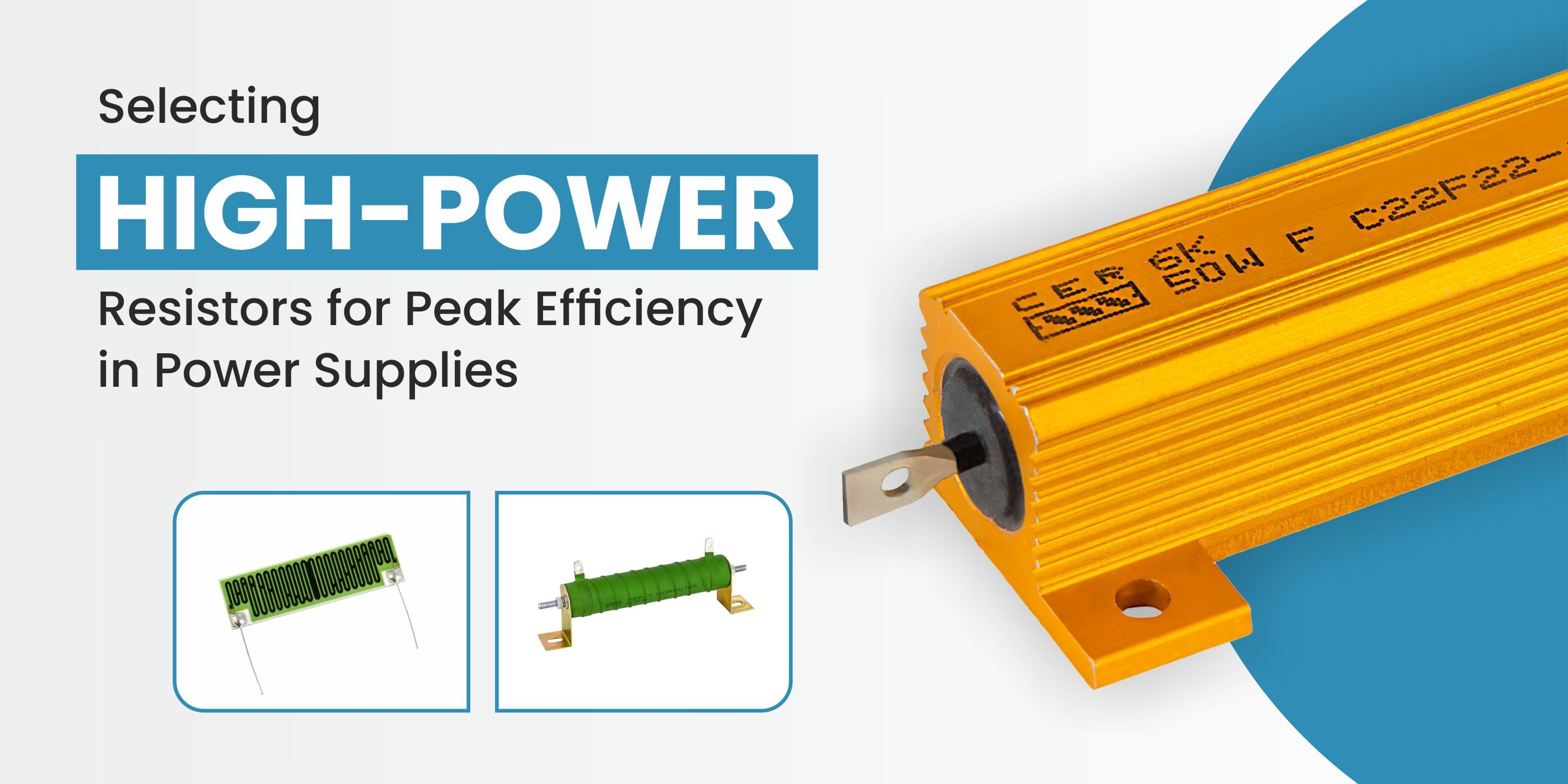
Selecting High-Power Resistors for Peak Efficiency in Power Supplies
Power supplies are the unsung heroes of electronics, silently converting raw power into the usable voltage levels that keep our devices running. However, even the most efficient power supply experiences some energy loss. This is where high-power resistors play a crucial role in maximizing efficiency and ensuring optimal performance.
This guide dives deep into the world of high-power resistors, exploring how they enhance power supply efficiency and the key considerations for selecting the right ones for your project.
Understanding Power Dissipation and Efficiency in Power Supplies
Every component in a power supply contributes to some level of energy loss, typically in the form of heat. This loss, known as power dissipation, reduces the overall efficiency of the power supply. The efficiency is calculated as the ratio of output power to input power, expressed as a percentage.
Here’s where high-power resistors come in. Traditional resistors may have limitations in power handling capacity. When the power dissipated in a resistor exceeds its rating, it can overheat and lead to component failure or reduced performance.
High-power resistors, on the other hand, are specifically designed to handle larger amounts of power without overheating. This allows them to play a critical role in key power supply functions while minimizing energy loss:
- Current Limiting: High-power resistors can be used to limit inrush current at startup, protecting sensitive components from damage and reducing overall power surge.
- Bleeder Resistors: In some circuits, high-power resistors act as bleeder resistors, discharging stored energy safely after power down. This prevents damage and improves user safety.
- Load Simulation: During power supply testing, high-power resistors can simulate real-world loads, allowing for accurate performance evaluation under various operating conditions.
Key Considerations for Selecting High-Power Resistors
By choosing the right high-power resistors, you can significantly enhance power supply efficiency and reliability. Here are the key factors to consider:
- Power Rating: This is the most crucial factor. Select a resistor with a power rating comfortably exceeding the anticipated power dissipation in your circuit.
- Resistance Value and Tolerance: Choose a resistor value that aligns with your circuit design and a tolerance that meets your required accuracy. Tighter tolerances often come with higher costs.
- Temperature Coefficient: High-power resistors experience some level of resistance change with temperature. For circuits requiring high stability, choose resistors with a low temperature coefficient.
- Form Factor: High-power resistors come in various sizes and styles (e.g., wirewound, chip). Consider the available space on your PCB and choose a suitable form factor.
- Cost: High-power resistors generally cost more than standard resistors. However, their superior power handling and long-term reliability often make them a cost-effective investment.
Cermet Resistors: The High-Power Choice for Peak Efficiency
Cermet resistors, a specialty of Cermet Resistronics, offer exceptional performance for high-power applications in power supplies. Here’s what sets them apart:
- High Power Dissipation: Compared to carbon resistors, cermet resistors boast significantly higher power handling capabilities, minimizing power loss due to heat dissipation.
- Improved Efficiency: By minimizing power dissipation in the resistor itself, cermet resistors contribute to a more efficient overall power supply operation.
- Stability and Reliability: Cermet resistors exhibit lower temperature coefficient and tighter tolerances, ensuring consistent performance over a wider operating temperature range.
- Long-Term Performance: The robust construction of cermet resistors ensures durability and reliable operation over an extended lifespan.
Optimizing Power Supply Efficiency with Cermet Resistors
By utilizing high-power cermet resistors in your power supply design, you can achieve:
- Reduced Heat Generation: Less power dissipation translates to cooler operating temperatures, improving component longevity and overall system reliability.
- Increased Efficiency: Minimized power loss in the resistors leads to a more efficient power supply, maximizing available output power.
- Enhanced Performance: Consistent resistance values and lower temperature coefficient contribute to stable and predictable power supply operation.
Conclusion
High-power resistors are essential components for maximizing power supply efficiency and ensuring optimal performance. By carefully selecting the right high-power resistors, particularly cermet resistors from Cermet Resistronics, you can build reliable and efficient power supplies that deliver peak performance in your projects.

